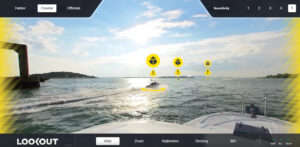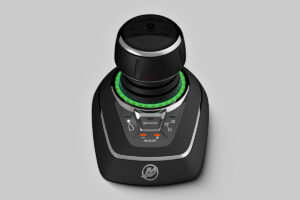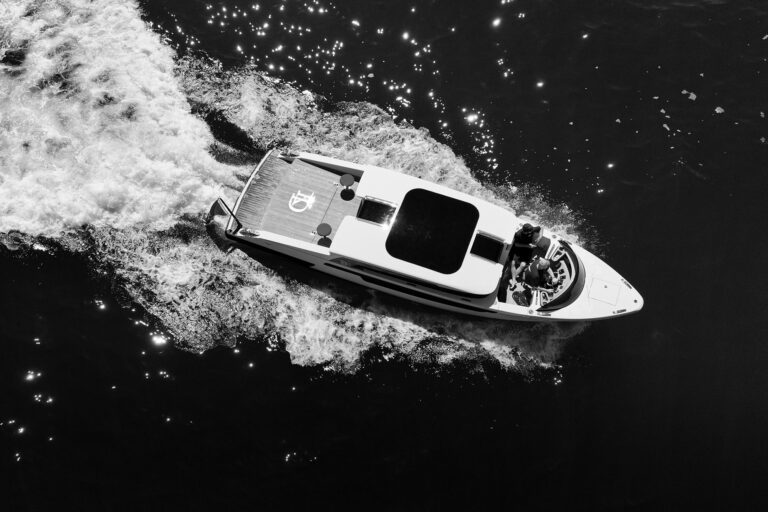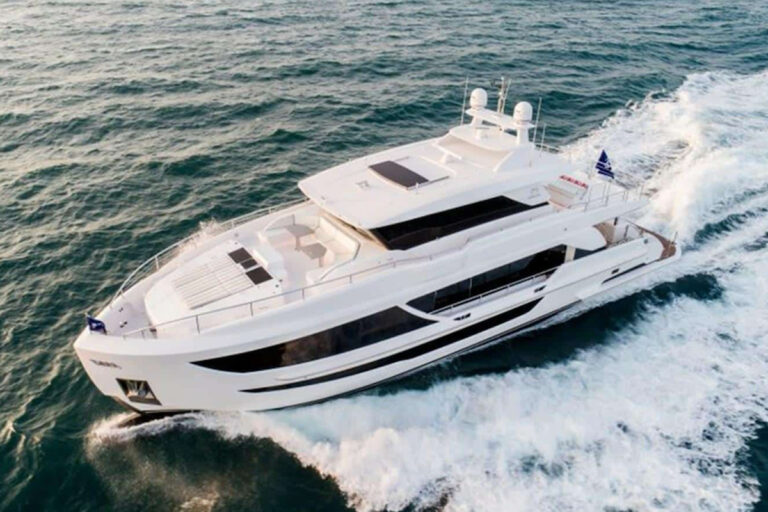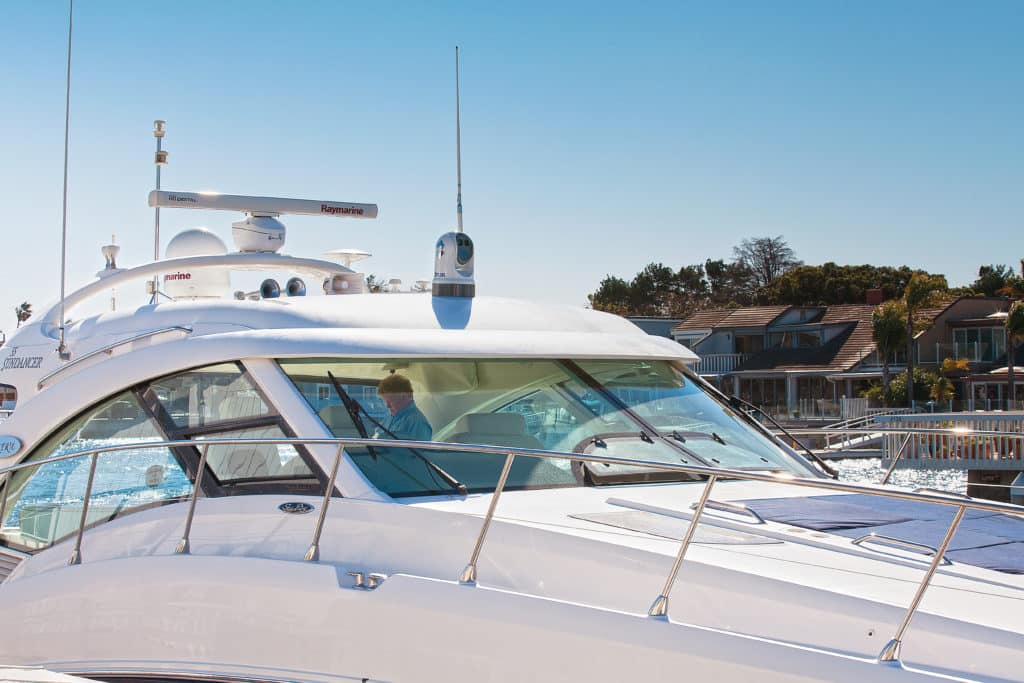
Several years ago, Patrick Sciacca, Yachting‘s editor-in-chief, and I traveled to Vancouver, British Columbia, to review the gorgeous Coastal Craft 560 IPS. The Coastal Craft handled high-speed turns like a dream, but I remember nervously scanning Howe Sound’s waters for errant logs, an unfortunate but unavoidable offspring of the Pacific Northwest’s logging industry. While I like to think that my eyes are relatively sharp, half-submerged logs can be tough to spot at 10 knots; 40 knots presents a different reality, with a much slimmer margin of error. We dodged calamity, but some electronic assistance would have certainly quelled my nerves.
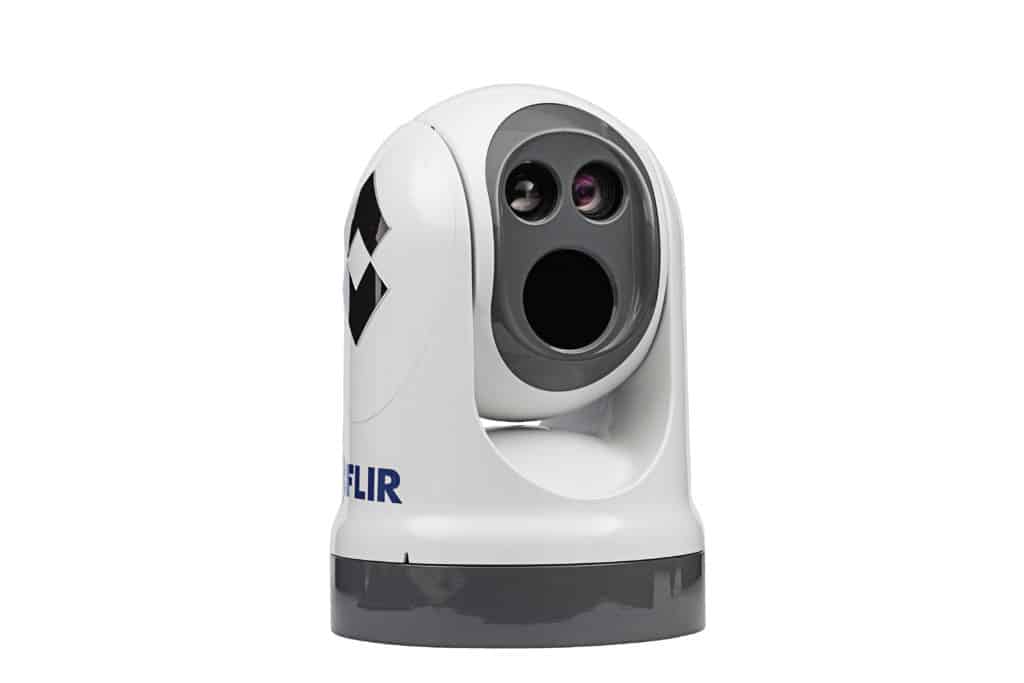
While AIS and radar dramatically help with collision avoidance and navigation, they don’t provide assistance when it comes to dodging logs, avoiding lobster pots or, heaven forbid, contending with a man-overboard emergency. FLIR’s latest fixed-mount thermal-imaging cameras, the M400 series, help increase situational awareness and bolster operational capabilities, and they provide the same level of technology that first responders and militaries trust to save lives and secure borders.
FLIR makes two versions of this high-end camera, the M400 ($70,000) and the M400XR ($85,000), the latter of which adds video tracking to its deliverables list. Both versions are gyrostabilized and equipped with a triple payload consisting of a high-resolution thermal-imaging camera; a high-definition, low-light color video camera; and a high-intensity LED spotlight. This trifecta is contained in a tidy, dome-shaped, waterproof housing that can continuously pan through 360 degrees and tilt plus-or-minus 90 degrees.
Both cameras offer HD imagery, and they both can be controlled using the camera’s dedicated joystick or via a touchscreen user interface using a networked multifunction display. The M400 also has an internal web server and IP-enabled controls. This allows a user to wirelessly control his camera using a smartphone or tablet and the FLIR Mobile app (iOS- and Android-friendly), provided that the camera is networked to a Wi-Fi hotspot or is accessible via a wireless access point.
“Salt buildup on the windows is one of the [common] reasons that the image isn’t clear. Just blast it with a hose.”
Unlike traditional night-vision technology, which requires a certain amount of lumens (from ambient light or a dedicated illuminator) to operate, thermal-imaging detectors sense minute temperature differences between objects and their backgrounds, which the detectors use to render video imagery. The M400 series’ 640-by-480 VOx microbolometers can detect differences as slender as 50 millikelvins, or 1/20th of one degree Celsius, at both long and short ranges. And thermal-imaging cameras work equally well in daylight as they do at night, which is helpful for spotting kayakers at high noon.
“[The M400] was a couple of years in development,” says Jay Robinson, FLIR Maritime’s vice president of product management, who adds that FLIR engineers packed a huge amount of hardware and software into a relatively small dome. Unlike previous fixed-mount FLIR cameras that relied on downstream black boxes to provide advanced-level features such as IP video and high-definition serial data interface, the M400 series’ main boards contain this hardware and allow the cameras to play nicely with third-party MFDs sans black boxes or downstream processing. In fact, M400 series cameras have just four connection cables — a power cable, an Ethernet cable, an HDSDI cable and a serial AV cable — that need to be installed to take full advantage of the camera’s capabilities.
While M400 series cameras have the same thermal-imaging sensor found on other high-end FLIR cameras, they sport a brand-new 3x optical zoom, which takes the horizontal field of view, or HFOV, from 18 degrees to 6 degrees. They also have a state-of-the-art Tau 2.7 camera core with a built-in electronic zoom that takes the HFOV from 6 degrees to 1.5 degrees. M400 cameras also have FLIR’s proprietary noise-reduction technology, Digital Detail Enhancement, which renders crisp edge details between objects and their backgrounds. FLIR says that an M400 can detect a man overboard at 1.3 nautical miles and a small vessel up to 3.2 nautical miles away.
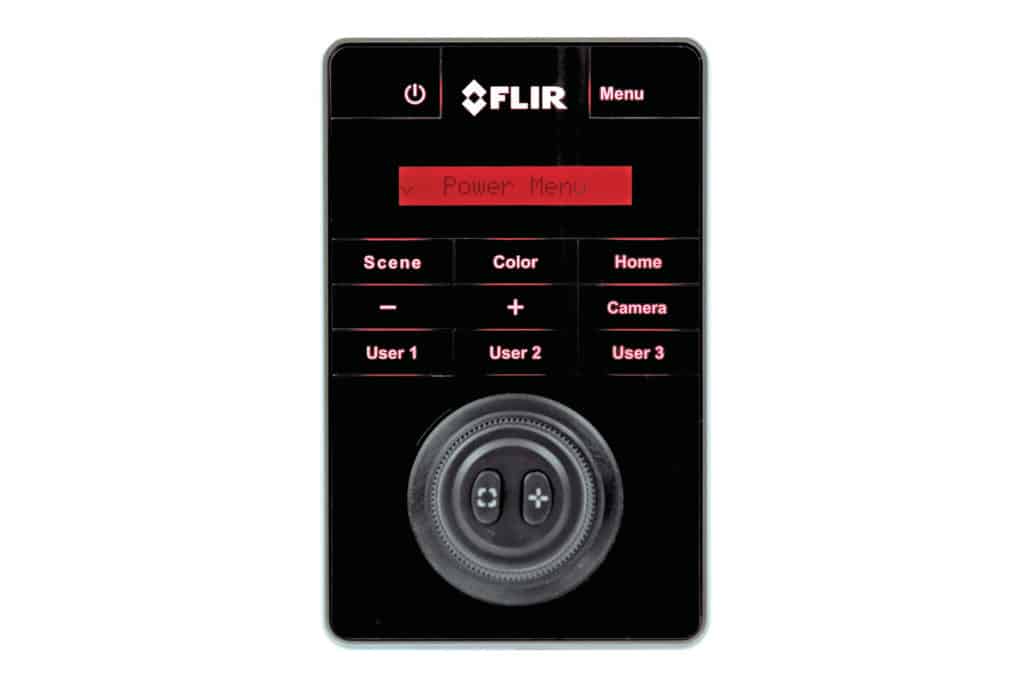
M400 series cameras also include a high-definition, low-light video camera that provides resolution up to 1080/30p and offers a range up to the visual horizon. “The color camera has a 30x optical zoom that brings the [HFOV] from 64 degrees to 2.3 degrees … and an e-zoom that brings this down to 0.2 degrees,” says Robinson, who adds that gyrostabilization is required to see objects accurately at range and at narrow fields of view in anything but millpond conditions. Also, like most security cameras, the M400’s color camera switches to black-and-white mode if there isn’t enough light (or illumination) to render color imagery. “You generally get a pretty clear picture without much light,” Robinson says. “Moonlight is enough to see quite a bit.”
A high-intensity LED spotlight completes the M400 package. “The spotlight has a narrow beam, so a user can point the [thermal-imaging] camera at a buoy and then light it up to show the crew,” Robinson says. “You can [also] light up people who are in approach, communicating that they are being watched.” FLIR says the spotlight has a maximum range of (ballpark) half a nautical mile.
While FLIR’s M400 cameras offer cutting-edge technology, they require surprisingly little maintenance. “Salt buildup on the windows is one of the [common] reasons that the image isn’t clear,” says Jay Robinson of FLIR. “Just blast it with a hose.” It doesn’t matter if the camera is turned on during washing, but users should use fresh water only (never Windex or similar solvents) and allow the unit to air-dry (no wipes or microfiber cloths). White plastic covers offer aesthetic-preserving sun protection, but they aren’t necessary. Also, Robinson reminds users to “park” their cameras after use, which shelters the lens in a downward-facing position.
All three of the M400’s onboard devices can be used simultaneously without interference or reduced performance.
While the M400 can help identify buoys and logs, it can also serve as a collision-avoidance device. Provided that the vessel’s radar is NMEA 0183-compatible and properly networked, it shares Tracked Target Messages that advise other networked instrumentation on the current location of its mini automatic radar plotting aid, or MARPA, targets. M400 cameras use this information to lock onto and track these targets, supplementing the user’s radar returns with video imagery.
In addition to radar tracking, the M400XR comes equipped with video tracking, which follows objects in a section or gate of the camera’s field of view. “The gate describes the area of interest for the video-tracking algorithm,” Robinson says.
The gate’s default setting is one-third of the image area, but users can adjust this preference. To operate, a user simply taps a button, and the M400’s video-tracking feature keeps either camera pointed at a target, without input from other networked instrumentation.
While M400 series cameras sport memorable price tags, they provide the electronic sophistication that first responders, law enforcement and militaries trust to help ensure operational success. “Mega-yacht customers like to buy the best-in-class [equipment] that’s being used by professionals,” Robinson says.
As for plying log-strewn waters, M400 series cameras enhance situational awareness while offering technical sophistication and a user-friendly interface that makes them welcome additions on board any yacht.



